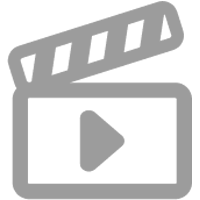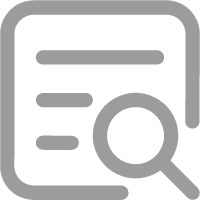| Citation: | Zhang C,Li Z,Song W,et al.Preliminary investigation on the wound healing effect of three-dimensional bioprinting ink containing human adipose-derived protein complexes[J].Chin J Burns,2021,37(11):1011-1023.DOI: 10.3760/cma.j.cn501120-20210813-00282. |

| [1] |
MascharakS, desJardins-ParkHE, DavittMF, et al. Preventing Engrailed-1 activation in fibroblasts yields wound regeneration without scarring[J].Science,2021,372(6540):eaba2374. DOI: 10.1126/science.aba2374.
|
| [2] |
ZhangJ, ZhengYJ, LeeJ, et al. A pulsatile release platform based on photo-induced imine-crosslinking hydrogel promotes scarless wound healing[J]. Nat Commun,2021,12(1):1670. DOI: 10.1038/s41467-021-21964-0.
|
| [3] |
GriffinDR, ArchangMM, KuanCH, et al. Activating an adaptive immune response from a hydrogel scaffold imparts regenerative wound healing[J]. Nat Mater,2021,20(4):560-569. DOI: 10.1038/s41563-020-00844-w.
|
| [4] |
GriffinDR,WeaverWM,ScumpiaPO, et al. Accelerated wound healing by injectable microporous gel scaffolds assembled from annealed building blocks[J].Nat Mater,2015,14(7):737-744. DOI: 10.1038/nmat4294.
|
| [5] |
NgWL, WangS, YeongWY, et al. Skin bioprinting: impending reality or fantasy?[J]. Trends Biotechnol,2016,34(9):689-699. DOI: 10.1016/j.tibtech.2016.04.006.
|
| [6] |
WonJY,LeeMH,KimMJ, et al. A potential dermal substitute using decellularized dermis extracellular matrix derived bio-ink[J].Artif Cells Nanomed Biotechnol,2019,47(1):644-649. DOI: 10.1080/21691401.2019.1575842.
|
| [7] |
ChimeneD, KaunasR, GaharwarAK. Hydrogel bioink reinforcement for additive manufacturing: a focused review of emerging strategies[J]. Adv Mater,2020,32(1):e1902026. DOI: 10.1002/adma.201902026.
|
| [8] |
ValotL,MartinezJ,MehdiA, et al. Chemical insights into bioinks for 3D printing[J].Chem Soc Rev,2019,48(15):4049-4086. DOI: 10.1039/c7cs00718c.
|
| [9] |
SomasekharanLT,RajuR,KumarS, et al. Biofabrication of skin tissue constructs using alginate, gelatin and diethylaminoethyl cellulose bioink[J].Int J Biol Macromol,2021,189:398-409. DOI: 10.1016/j.ijbiomac.2021.08.114.
|
| [10] |
ChenXF,YueZL,WinbergPC, et al. 3D bioprinting dermal-like structures using species-specific ulvan[J].Biomater Sci,2021,9(7):2424-2438. DOI: 10.1039/d0bm01784a.
|
| [11] |
ChoudhuryD, TunHW, WangTY, et al. Organ-derived decellularized extracellular matrix: a game changer for bioink manufacturing?[J]. Trends Biotechnol,2018,36(8):787-805. DOI: 10.1016/j.tibtech.2018.03.003.
|
| [12] |
ShookB, Rivera GonzalezG, EbmeierS, et al. The role of adipocytes in tissue regeneration and stem cell niches[J]. Annu Rev Cell Dev Biol,2016,32:609-631. DOI: 10.1146/annurev-cellbio-111315-125426.
|
| [13] |
Guerrero-JuarezCF,PlikusMV.Emerging nonmetabolic functions of skin fat[J].Nat Rev Endocrinol,2018,14(3):163-173. DOI: 10.1038/nrendo.2017.162.
|
| [14] |
ZwickRK, Guerrero-JuarezCF, HorsleyV, et al. Anatomical, physiological, and functional diversity of adipose tissue[J]. Cell Metab,2018,27(1):68-83. DOI: 10.1016/j.cmet.2017.12.002.
|
| [15] |
ZhangZZ,ShaoML,HeplerC, et al. Dermal adipose tissue has high plasticity and undergoes reversible dedifferentiation in mice[J].J Clin Invest,2019,129(12):5327-5342. DOI: 10.1172/JCI130239.
|
| [16] |
SarkanenJR,RuusuvuoriP,KuokkanenH, et al. Bioactive acellular implant induces angiogenesis and adipogenesis and sustained soft tissue restoration in vivo[J].Tissue Eng Part A,2012,18(23/24):2568-2580. DOI: 10.1089/ten.TEA.2011.0724.
|
| [17] |
HeYF,LinMH,WangXC, et al. Optimized adipose tissue engineering strategy based on a neo-mechanical processing method[J].Wound Repair Regen,2018,26(2):163-171. DOI: 10.1111/wrr.12640.
|
| [18] |
SarkanenJR,KailaV,MannerströmB, et al. Human adipose tissue extract induces angiogenesis and adipogenesis in vitro[J].Tissue Eng Part A,2012,18(1/2):17-25. DOI: 10.1089/ten.TEA.2010.0712.
|
| [19] |
LiZ, HuangS, LiuYF, et al. Tuning alginate-gelatin bioink properties by varying solvent and their impact on stem cell behavior[J]. Sci Rep,2018,8(1):8020. DOI: 10.1038/s41598-018-26407-3.
|
| [20] |
LiuYF,LiJJ,YaoB, et al. The stiffness of hydrogel-based bioink impacts mesenchymal stem cells differentiation toward sweat glands in 3D-bioprinted matrix[J].Mater Sci Eng C Mater Biol Appl,2021,118:111387. DOI: 10.1016/j.msec.2020.111387.
|
| [21] |
WeiLC,LiZ,LiJJ, et al. An approach for mechanical property optimization of cell-laden alginate-gelatin composite bioink with bioactive glass nanoparticles[J].J Mater Sci Mater Med,2020,31(11):103. DOI: 10.1007/s10856-020-06440-3.
|
| [22] |
ChangM, NguyenTT. Strategy for treatment of infected fiabetic foot ulcers[J]. Acc Chem Res,2021,54(5):1080-1093. DOI: 10.1021/acs.accounts.0c00864.
|
| [23] |
NinanN,ThomasS,GrohensY.Wound healing in urology[J].Adv Drug Deliv Rev,2015(82/83):93-105. DOI: 10.1016/j.addr.2014.12.002.
|
| [24] |
WalkerJT,McLeodK,KimS, et al. Periostin as a multifunctional modulator of the wound healing response[J].Cell Tissue Res,2016,365(3):453-465. DOI: 10.1007/s00441-016-2426-6.
|
| [25] |
ChouhanD,DeyN,BhardwajN, et al. Emerging and innovative approaches for wound healing and skin regeneration: current status and advances[J].Biomaterials,2019,216:119267. DOI: 10.1016/j.biomaterials.2019.119267.
|
| [26] |
RodriguesM, KosaricN, BonhamCA, et al. Wound healing: a cellular perspective[J]. Physiol Rev,2019,99(1):665-706. DOI: 10.1152/physrev.00067.2017.
|
| [27] |
DongMW,LiM,ChenJ, et al. Activation of α7nAChR promotes diabetic wound healing by suppressing AGE-induced TNF-α production[J].Inflammation,2016,39(2):687-699. DOI: 10.1007/s10753-015-0295-x.
|
| [28] |
YenYH,PuCM,LiuCW, et al. Curcumin accelerates cutaneous wound healing via multiple biological actions: the involvement of TNF-α, MMP-9, α-SMA, and collagen[J].Int Wound J,2018,15(4):605-617. DOI: 10.1111/iwj.12904.
|
| [29] |
ZhouDJ, LiuTF, WangS, et al. Effects of IL-1β and TNF-α on the expression of P311 in vascular endothelial cells and wound healing in mice[J]. Front Physiol,2020,11:545008. DOI: 10.3389/fphys.2020.545008.
|
| [30] |
GurtnerGC,WernerS,BarrandonY, et al. Wound repair and regeneration[J].Nature,2008,453(7193):314-321. DOI: 10.1038/nature07039.
|
| [31] |
SpiekmanM,PrzybytE,PlantingaJA, et al. Adipose tissue- derived stromal cells inhibit TGF-β1-induced differentiation of human dermal fibroblasts and keloid scar-derived fibroblasts in a paracrine fashion[J].Plast Reconstr Surg,2014,134(4):699-712. DOI: 10.1097/PRS.0000000000000504.
|
| [32] |
KruglikovIL, SchererPE. Dermal adipocytes: from irrelevance to metabolic targets?[J]. Trends Endocrinol Metab,2016,27(1):1-10. DOI: 10.1016/j.tem.2015.11.002.
|
| [33] |
SpiekmanM,van DongenJA,WillemsenJC, et al. The power of fat and its adipose-derived stromal cells: emerging concepts for fibrotic scar treatment[J].J Tissue Eng Regen Med,2017,11(11):3220-3235. DOI: 10.1002/term.2213.
|
| [34] |
KoleskyDB,TrubyRL,GladmanAS, et al. 3D bioprinting of vascularized, heterogeneous cell-laden tissue constructs[J].Adv Mater,2014,26(19):3124-3130. DOI: 10.1002/adma.201305506.
|
| [35] |
NingLQ,GilCJ,HwangB, et al. Biomechanical factors in three-dimensional tissue bioprinting[J].Appl Phys Rev,2020,7(4):041319. DOI: 10.1063/5.0023206.
|
| [36] |
KimBS,KwonYW,KongJS, et al. 3D cell printing of in vitro stabilized skin model and in vivo pre-vascularized skin patch using tissue-specific extracellular matrix bioink: a step towards advanced skin tissue engineering[J].Biomaterials,2018,168:38-53. DOI: 10.1016/j.biomaterials.2018.03.040.
|
| [37] |
YaoB,WangR,WangYH, et al. Biochemical and structural cues of 3D-printed matrix synergistically direct MSC differentiation for functional sweat gland regeneration[J].Sci Adv,2020,6(10):eaaz1094. DOI: 10.1126/sciadv.aaz1094.
|
| [38] |
WangSF, WangXH, NeufurthM, et al. Biomimetic alginate/gelatin cross-linked hydrogels supplemented with polyphosphate for wound healing applications[J]. Molecules, 2020, 25(21):5210. DOI: 10.3390/molecules25215210.
|
| [39] |
KaravasiliC,TsongasK,AndreadisII, et al. Physico-mechanical and finite element analysis evaluation of 3D printable alginate- methylcellulose inks for wound healing applications[J].Carbohydr Polym,2020,247:116666. DOI: 10.1016/j.carbpol.2020.116666.
|
| [40] |
TurnerPR,MurrayE,McAdamCJ, et al. Peptide chitosan/dextran core/shell vascularized 3D constructs for wound healing[J].ACS Appl Mater Interfaces,2020,12(29):32328-32339. DOI: 10.1021/acsami.0c07212.
|
 张超视频解读~1.mp4
张超视频解读~1.mp4
|

|
